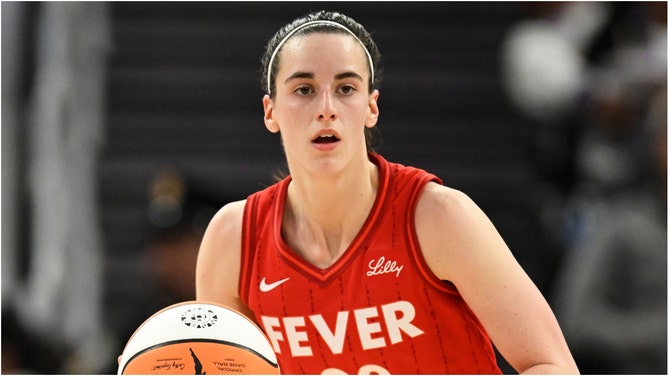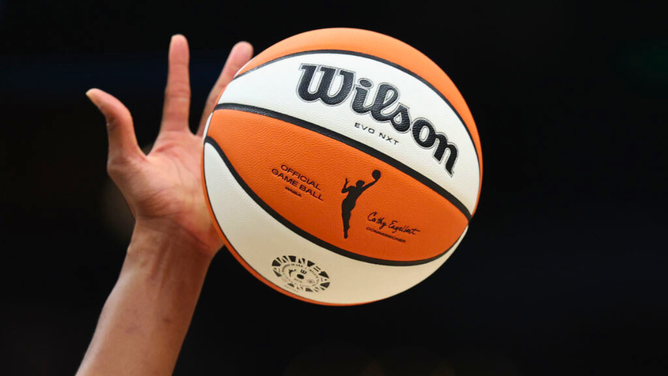WNBA Players Reject League's First CBA Offer: ‘A Slap In The Face’
As the WNBA enjoys record-breaking growth and expansion, its players are pushing back on a new labor deal they say falls short.
The WNBA Players Association has rejected the league’s initial offer for a new Collective Bargaining Agreement (CBA), with union representatives calling the proposal inadequate and out of step with the league’s rapid growth and the increasing demands of its athletes.
"We got a proposal from the league, which was honestly a slap in the face," Phoenix Mercury forward Satou Sabally said.
The offer comes as the WNBA enjoys unprecedented popularity. The league has drawn record attendance and viewership over the past two seasons, fueled in large part by a wave of young talent, including Caitlin Clark, Angel Reese and Paige Bueckers.

The WNBA has seen unprecedented growth since Caitlin Clark ws drafted No. 1 overall in 2024.
(Photo by Eakin Howard/Getty Images)
National broadcasts have seen ratings surge, sponsorship revenue is up, and teams are now drawing multi-million-dollar investments.
In 2024, the Golden State Valkyries paid $50 million to join the league as an expansion team. Toronto and Portland are set to begin play in 2026, having each paid more than $115 million. The newest round of expansion cities — Cleveland (2027), Detroit (2028) and Philadelphia (2029) — will reportedly come with a $250-million price tag per team.
MORE: WNBA Announces Three Expansion Teams In Cleveland, Philadelphia And Detroit
Despite the booming popularity and growing revenues, players say their pay, resources and working conditions haven’t kept pace. The current maximum base salary for a WNBA player is roughly $250,000. That's far less than what top male athletes earn in their pro leagues, and many WNBA stars have to play overseas or in the new Unrivaled 3-on-3 league in the offseason to supplement their income.
Sabally argued that the league should prioritize investing in current rosters, which are currently capped at 12 players, before focusing on expansion.
"We really have to put our emphasis on the players that are in the league right now," she said. "I love to see the league growing… but how cool would it also be to have like a little bit expansion on the rosters."
RELATED: Mercury's Satou Sabally Complains About Grueling WNBA Schedule, Says It Will Be Addressed In New CBA
In addition to higher salaries, players are pushing for improved travel accommodation, better health and maternity benefits and greater investment from ownership groups. Sabally also expressed concern that some existing teams aren’t doing enough to support their players.
"Maybe focus on the teams also that find excuses continuously to lack investment into their players before we focus on adding more to the grain of people that can’t really be sustained," she said.
WNBA Players Grow Increasingly Unhappy With League
This year is the final season of the WNBA's current CBA, of which the players opted out last October. The rejection of the league’s first proposal raises the stakes ahead of this offseason. While there has been no official talk of a strike or work stoppage, frustration is obviously mounting within the players' union.
The elephant in the room, of course, is that, despite its relative explosion in popularity, the WNBA has never turned a profit in its 28+ seasons. The NBA and its team owners largely subsidize the league, which lost a whopping $40 million last season — despite record-breaking ticket sales and viewership.

(Photo by Steph Chambers/Getty Images)
Still, WNBA Commissioner Cathy Engelbert has touted the league’s growth as a sign of progress and long-term viability. In announcing the three new franchises last week, Engelbert described the expansion as "historic" and "a powerful reflection of our league’s extraordinary momentum, the depth of talent across the game and the surging demand for investment in women’s professional basketball."
But for many players, expanding the league without addressing what they see as its current inequities is a step in the wrong direction — the WNBA putting the cart before the horse.
So while the demands for higher pay, expanded rosters and improved conditions grow louder, the league now faces a pivotal question: how much can it afford to give? And how much can it afford not to?